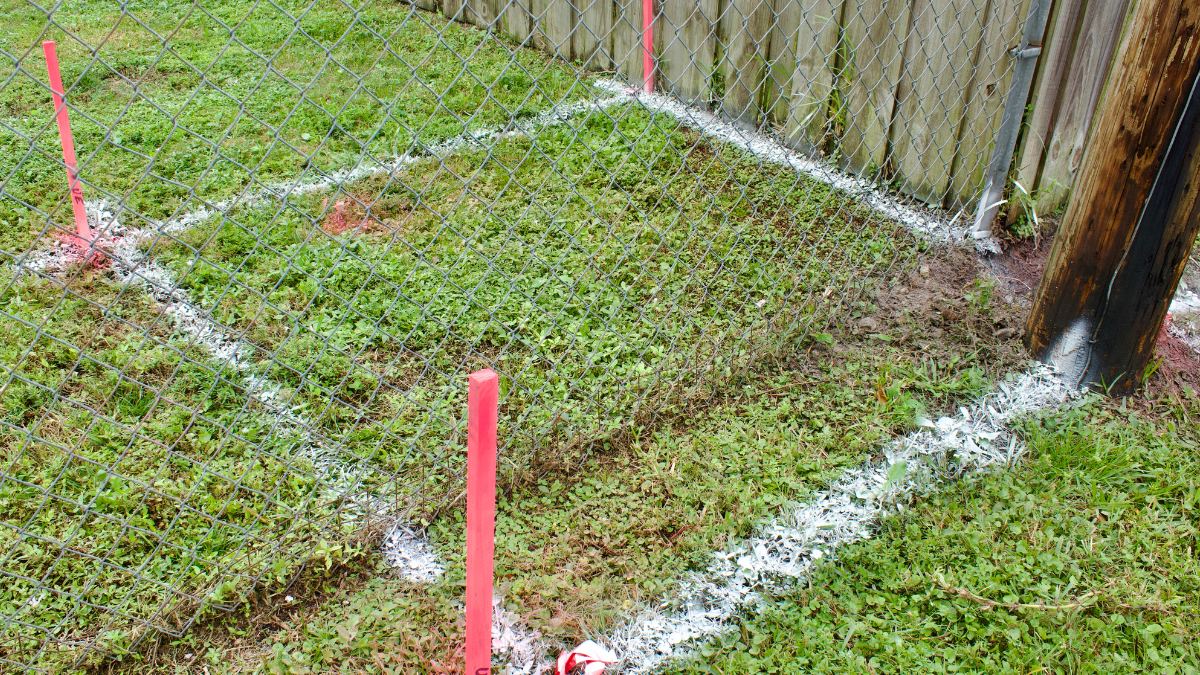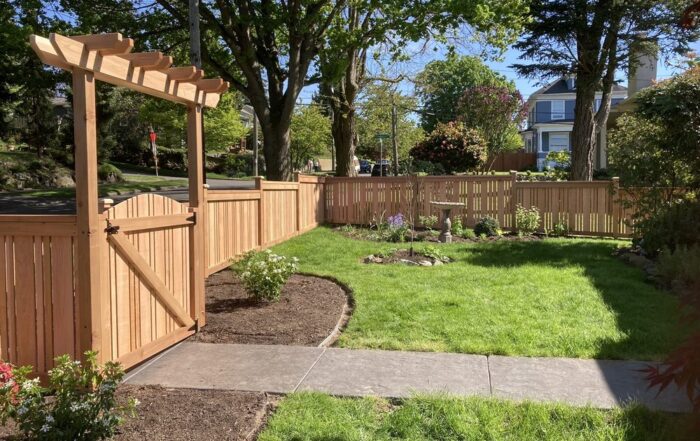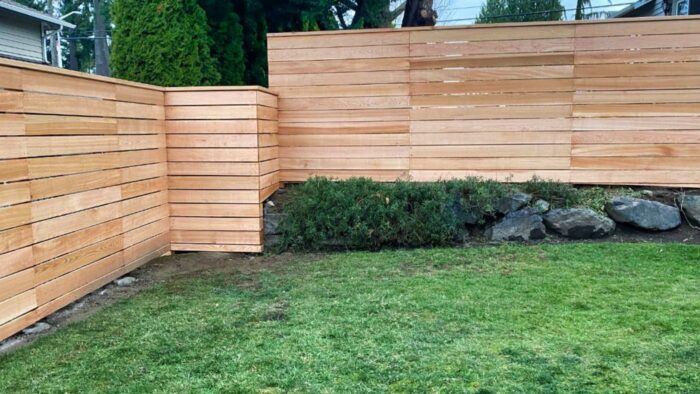Are you planning to build a fence on your property? Understanding easements is crucial to avoid legal issues and ensure compliance with local regulations. This guide explores different types of easements, their impact on fence construction, and offers best practices and legal guidelines to help you navigate this complex topic effectively.
Are you planning to build a fence but unsure how an easement for fence may impact your plans? Easements for fences can have significant implications on where you can place your fence, especially in relation to the property line. This article will guide you through understanding easements, their types, and how they affect fence construction on your property.
Key Takeaways
- Easements allow others to use part of your property for specific purposes, which can restrict where and how you build structures like fences.
- Different types of easements (utility, driveway, conservation) have unique rules and limitations impacting fence construction, so it’s crucial to understand each type’s specifics.
- Before constructing a fence on an easement, check local laws, consult with professionals, and communicate with neighbors to avoid legal issues and ensure compliance with easement agreements.
Introduction
When you own property, it’s easy to assume you have the ultimate control over it. However, easements can complicate this assumption. An easement is a legal right that gives an individual or organization permission to utilize someone else’s property for a particular purpose. This can include activities such as:
- accessing a driveway
- installing utility lines
- running lines through your yard
- neighbors accessing their homes via your driveway
Easements serve a greater public good, similar to eminent domain actions, and can significantly impact your property rights. For example, if you have a utility easement on your property, you might find restrictions on where you can build a fence or other structures. Understanding these legal rights and restrictions is crucial to avoid any misuse of an easement.
Ultimately, knowing how easements work will help you make informed decisions and avoid potential legal issues when building within your property lines. With this knowledge, you can better manage your land and ensure that any structures you plan to build do not infringe on these legal rights.
What is an Easement?
An easement is a legal right that gives an individual or organization permission to utilize someone else’s property for a particular purpose. This can include activities such as accessing a driveway or installing utility lines. This means that while you own the property, another party has the right to use it in a way defined by the easement agreement. The landowner retains the right to use the land as long as it does not obstruct the easement.
Easements are often established to serve a greater public good, such as allowing utility companies to lay power lines, providing access to properties that would otherwise be landlocked, or creating a sidewalk easement for pedestrian use. These legal rights are essential for various infrastructure and community needs, but they can also place restrictions on how you use your property.
For property owners, understanding the scope and limitations of easements is crucial. These agreements can restrict building activities, such as erecting fences or adding other structures. Knowing the specifics of any easements on your property helps you avoid legal issues and ensures that you can use your land effectively while respecting the rights granted by these agreements.
Types of Easements Impacting Fence Building

Utility easement markings for new fence installation
Several types of easements can influence where and how you can build a fence on your property. Understanding these can help you navigate the complexities of property rights and avoid potential conflicts. The most common easements affecting fence construction include utility easements, driveway easements, and conservation easements.
Each type of easement comes with its own set of rules and limitations. Some common types of easements include:
- Utility easements, which allow for the placement of storm drains, sanitary sewer mains, or natural gas lines underground on private property.
- Driveway easements, which grant access to a property via a short road or driveway, and can complicate fence construction.
- Conservation easements, which aim to protect natural resources and can significantly limit development and fencing options.
Let’s delve deeper into each of these to understand their specific impacts.
Utility Easements
Utility easements are among the most common types of easements impacting property owners. These easements often run through or under private property, affecting structures like fences. For instance, an above-ground utility easement allows power and telephone lines to pass over private property, while underground easements cover elements like electrical power lines or telephone lines.
Utility easements, often found along property lines, are marked with signs or floor paint to indicate the presence of underground or overhead utility lines, making it easier to identify where these restrictions apply. One key aspect of a utility easement is the need for utility companies to access areas under any structures built on these easements, including fences. This means that if you build a fence over a utility easement, you might be required to remove it to allow for maintenance or repairs.
This helps both property owners and the utility company to avoid any potential conflicts or issues.
Driveway Easements
Driveway easements are another common type of easement that can impact fence construction. These easements typically allow access for properties located behind other properties, especially in subdivided lots. For instance, if your property is at the back of a lot, you might have a driveway easement that allows you or others to pass through the front property to reach yours.
A driveway easement is often necessary when a property lot is divided into front and back sections and can also provide access to public areas like beaches or parks. When considering building a fence along such an easement, it’s crucial to ensure that the fence does not impede access. Clear access must be maintained to comply with the easement agreement, which can sometimes complicate fence construction.
Conservation Easements
Conservation easements are designed to protect natural resources and scenic beauty by limiting land development. These legal agreements can cover various types of land, including:
- forests
- fields
- wetlands
- rivers
- historic buildings or cultural sites
Conservation easements can provide property owners with financial benefits, including reduced taxes and the potential to receive tax credits.
However, these easements also come with significant restrictions. They often limit building activities to preserve the natural environment, which can include restrictions on fence construction. If you have a conservation easement on your property, it’s essential to understand these limitations and seek permissions before building any structures. This ensures that the natural resources and scenic beauty that the easement aims to protect are not compromised by your fencing plans.
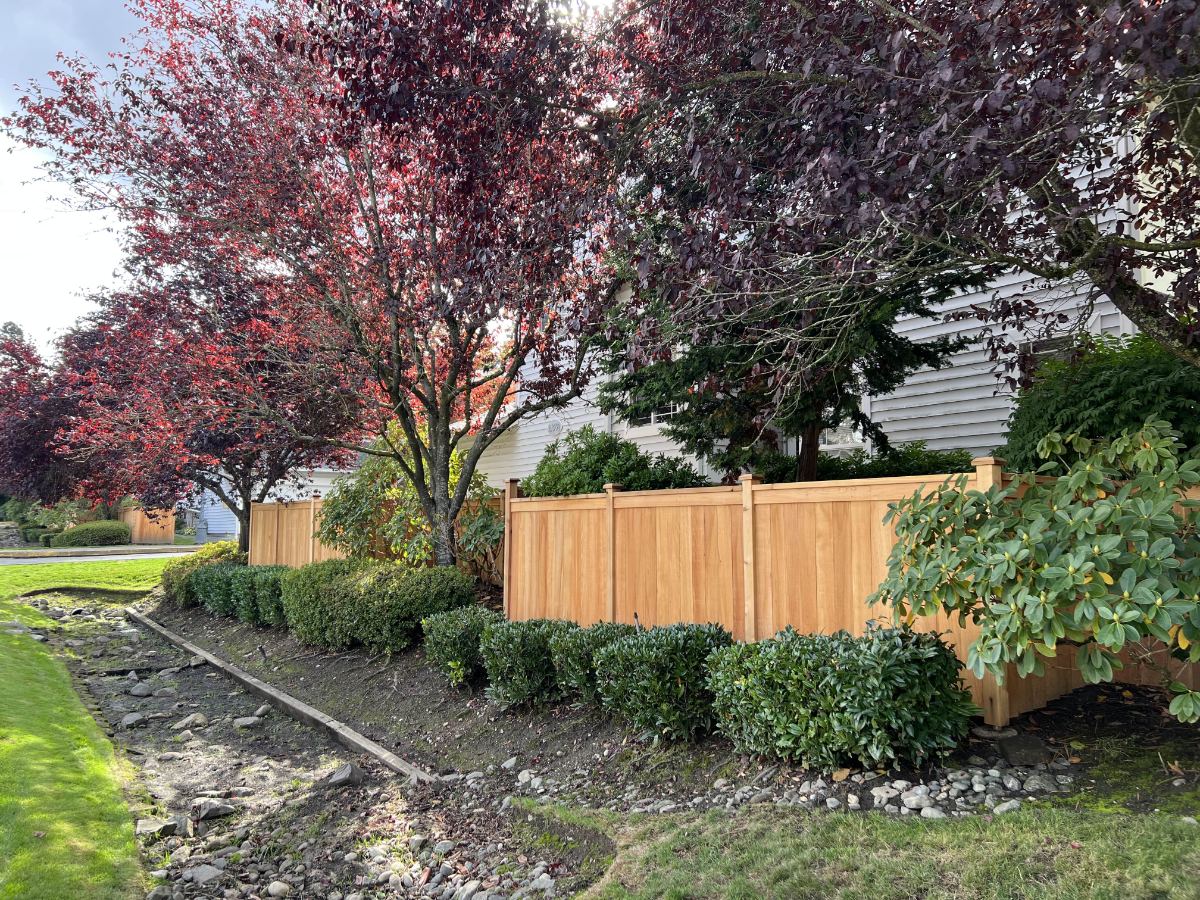
Sky Fence Company project built along a drainage easement
Drainage Easements
Drainage easements are critical for managing water flow and preventing flooding and erosion. These easements allow for the construction and maintenance of drainage systems, such as ditches, swales, and pipes, which direct water away from properties to prevent damage.
Building a fence on a drainage easement can be challenging because it must not obstruct the flow of water. Any structure that interferes with drainage can lead to water damage and potential legal issues. Therefore, it’s essential to understand the specific requirements and limitations of your drainage easement before planning your fence.
Before constructing a fence within a drainage easement, consult with local authorities and review your property’s easement documents. You may need special permissions or need to adhere to specific guidelines to ensure that your fence does not impede drainage. In some cases, you might be required to install a type of fencing that allows water to pass through easily or to leave gaps in the fence to maintain water flow.
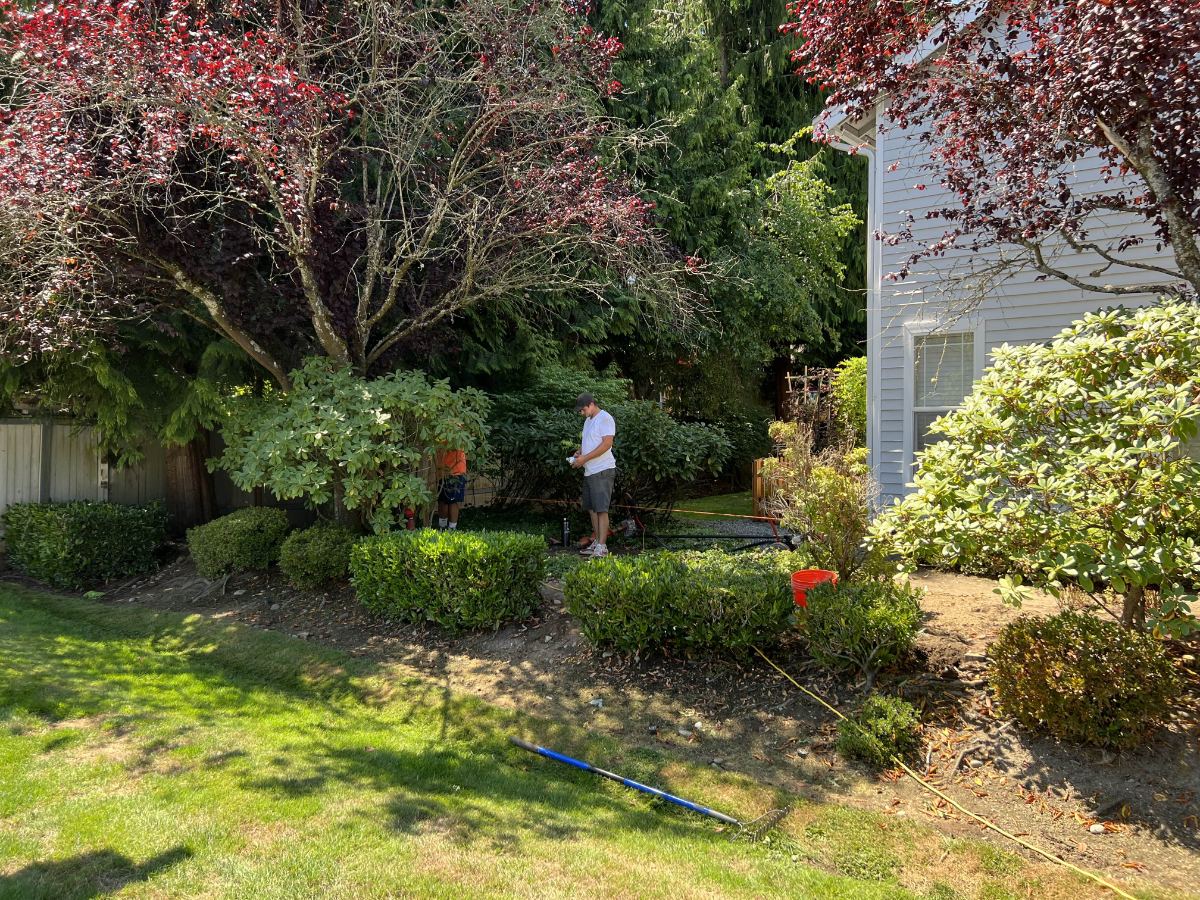
Sky Fence Company team marking fence line for new construction in Mountlake Terrace, Washington
Legal Considerations for Building a Fence on an Easement
Building a fence on an easement involves several legal considerations. A property owner should first check their title documents for any easements on their property. A servient landowner, the property owner granting the easement, cannot interfere with the scope of the easement, even if the easement holder does not need the entire area. This means you can build a fence on an easement, but it must not obstruct the easement’s intended use.
Legal conflicts about easement use can escalate quickly, so consulting with a local real estate attorney is advisable before making any changes. Understanding the legal landscape helps you navigate potential issues and ensures that you comply with all relevant agreements and restrictions.
Easement Agreements
Easement agreements are vital in defining the scope and terms of an easement’s use. These agreements usually outline the specific rights and responsibilities of both the landowner and the easement holder. For instance, driveway easement agreements should include details about the length, size, and maintenance responsibilities of the driveway.
The language in the easement agreement is crucial and should be reviewed carefully to understand the rights granted. A well-documented easement agreement can help prevent disputes and ensure that both parties understand their obligations and limitations. It’s always a good idea to have a written agreement detailing all aspects of the easement to avoid future legal issues.
Restrictions and Permissions
When building a fence on an easement, it’s essential to understand the restrictions and permissions involved. Generally, installing a fence on an easement requires permissions to ensure it does not unreasonably interfere with easement rights. For example, you might need permission from utility companies if their lines run through the easement.
Access must always be granted to utility companies for maintenance of lines under or above your property. Homeowners may need to remove fences or other structures if they interfere with utility access. Therefore, while it is legally permissible to build a fence on an easement, it may need to be removed if the dominant estate needs to gain access. This understanding is crucial to avoid unexpected legal or practical issues.
Practical Steps for Property Owners
For property owners considering building a fence on an easement, taking practical steps can help navigate the complexities involved. Before starting any construction, it’s essential to check for existing easement agreements that might restrict your plans.
These steps will help you avoid legal issues and ensure that your fence complies with all relevant regulations and agreements.
Research Local Laws
Researching local laws is a critical first step. State regulations and local ordinances can greatly influence what can be done with an easement. For example, Washington state law requires landowners to give notice to adjoining landowners before building a boundary fence.
Consulting with your local municipality can help ensure that your building plans do not infringe upon easement access points.
Consult with Professionals
Consulting with professionals, such as real estate attorneys and surveyors, is highly recommended. A real estate attorney can help navigate complex laws and provide case-specific advice to avoid potential legal issues.
Surveyors can assist in locating and interpreting land records and easement agreements, ensuring that your construction plans are compliant.
Real estate attorneys can also offer free consultations to help you understand the specific terms of your easement agreements and provide guidance on how to proceed.
This professional advice can be invaluable in ensuring that your fence construction does not lead to unintended legal conflicts.
Communicate with Neighbors
Effective communication with neighbors is essential when planning to build a fence on an easement. Open discussions can ensure mutual understanding of the easement boundaries and uses. Engaging with neighbors about your intended use of the easement space can help preemptively address potential disagreements.
Preparing what to say before approaching your neighbors can make these conversations smoother. Clear communication helps maintain good relations and ensures that both parties are aware of and agree on the use of shared spaces.
Common Scenarios and Solutions
Navigating easements can present various challenges, but understanding common scenarios can help you find practical solutions. Whether dealing with fences near utility lines, shared driveways, or conservation easements, knowing the best practices can save you from headaches down the road.
Fences Near Utility Lines
When building fences near utility lines, it’s crucial to ensure that the fence does not interfere with access for maintenance or repair by utility companies. Utility companies often need to access both above-ground and below-ground utility lines, which can result in fences being temporarily removed.
Hiring a professional fencing company can help mitigate risks by ensuring proper placement and avoiding buried wires. Hand digging near marked utility lines is often recommended to prevent damaging underground utilities.
Utility companies often state they will try to reconstruct fences they need to remove as a courtesy to property owner.
Shared Driveways and Fencing
Driveway easements grant access rights over a portion of land for vehicle passage, but they typically do not allow parking on the easement. This access is essential for properties with shared driveways, making it crucial to consider these rights when planning to build a fence.
Ensuring that the fence does not impede access as guaranteed by the easement agreement is vital. When constructing fences along shared driveways, it’s important to maintain clear communication with all parties involved.
This helps avoid conflicts and ensures that all access points remain unobstructed. Proper planning and adhering to easement agreements can help you build a fence that meets your needs while respecting the rights of others.
Protecting Natural Resources
Conservation easements are designed to protect natural resources by restricting development and preserving the environment. These easements can cover various types of land, including greenbelts or parks alongside your property. While some limited fencing may be permitted, it’s crucial to minimize the impact on the protected environment and wildlife habitats.
Guidelines for Building in Conservation Easements
When building fences within conservation easements, you must:
- Seek proper permissions
- Ensure that your plans align with the goals of the easement
- Design fences that blend with the natural landscape
- Use materials that do not harm the environment
By respecting these guidelines, you can contribute to preserving natural resources while meeting your fencing needs.
Summary
Understanding easements and their impact on fence building is crucial for property owners. Easements can significantly restrict how you use your land, making it essential to know the type of easements affecting your property and the legal considerations involved.
Whether dealing with utility, driveway, or conservation easements, being informed and proactive can help you avoid potential conflicts and legal issues.
By researching local laws, consulting with professionals, and communicating with neighbors, you can navigate the complexities of easements effectively.
Practical steps and common scenarios discussed in this blog post provide a roadmap for managing your property and building fences that comply with easement agreements. Empowered with this knowledge, you can confidently manage your property while respecting the rights and purposes of easements.
Frequently Asked Questions
Can I build a fence on a utility easement?
Yes, you can build a fence on a utility easement, but ensure it doesn’t block access for maintenance or repair, as the utility company may request its removal.
What should I do before building a fence on an easement?
Before building a fence on an easement, make sure to check your title documents, research local laws, consult professionals, and communicate with your neighbors to prevent potential conflicts. Doing so will help you avoid any issues that may arise.
How can a driveway easement affect my fence construction plans?
A driveway easement restricts your fence construction, as it must not obstruct access rights. It is important to communicate and follow the easement agreements.
Are there restrictions on building fences within conservation easements?
Yes, conservation easements typically have restrictions on building fences to protect natural resources, but limited fencing may be allowed with proper permissions if it minimizes environmental impact.
Why is it important to consult with a real estate attorney regarding easements?
It’s important to consult with a real estate attorney regarding easements because they can offer case-specific advice, interpret easement agreements, and ensure compliance with local laws, preventing potential legal problems.
Can an easement be removed or modified?
Yes, but it requires agreement from both the property owner and the easement holder, often involving legal steps. Consult a real estate attorney for guidance.
How can I find out if there are easements on my property?
Review your property’s title documents or plat map, or hire a professional surveyor to conduct a land survey.
What happens if I build a fence that violates an easement agreement?
You may need to remove or modify the fence. Violations can result in legal action, fines, or court-ordered removal.
Are there any special considerations for agricultural easements?
Yes, agricultural easements are designed to preserve farmland and limit non-agricultural development. Building a fence on land with an agricultural easement may require special permissions and must comply with the terms of the easement. These fences should not interfere with farming activities and should be constructed in a way that supports the agricultural purpose of the land.
How do conservation easements benefit property owners?
Benefits include potential tax deductions, reduced property taxes, and grants. They also help preserve the land’s natural beauty and ecological value..
Can I dispute an existing easement on my property?
Yes, you can dispute an existing easement, but it can be a complex and challenging process. Disputing an easement typically involves proving that the easement was improperly granted or that it is no longer necessary. Legal assistance is highly recommended in such cases to navigate the complexities and increase the chances of a successful dispute.

